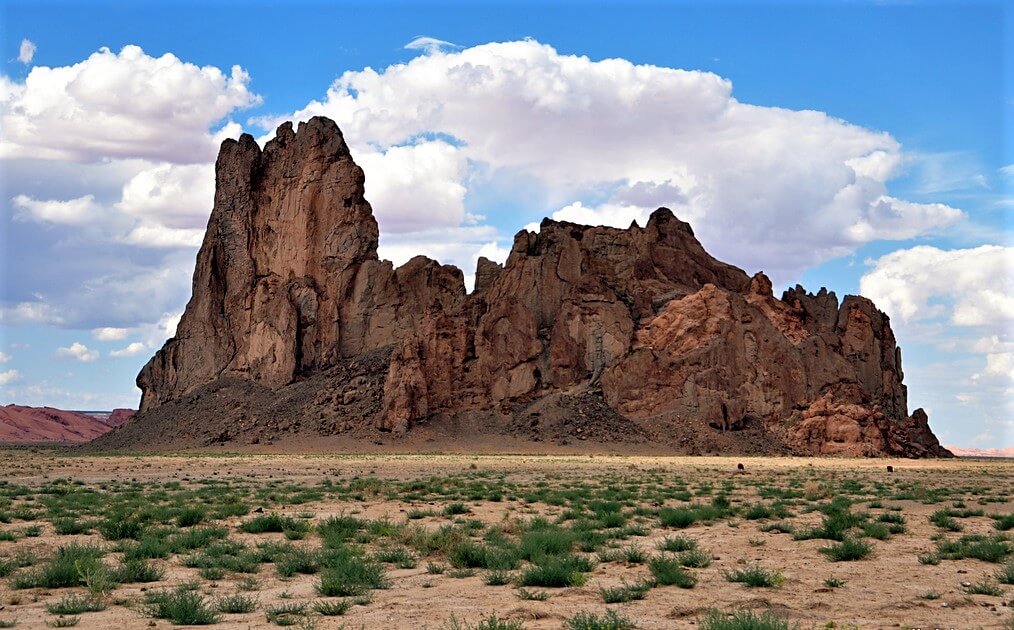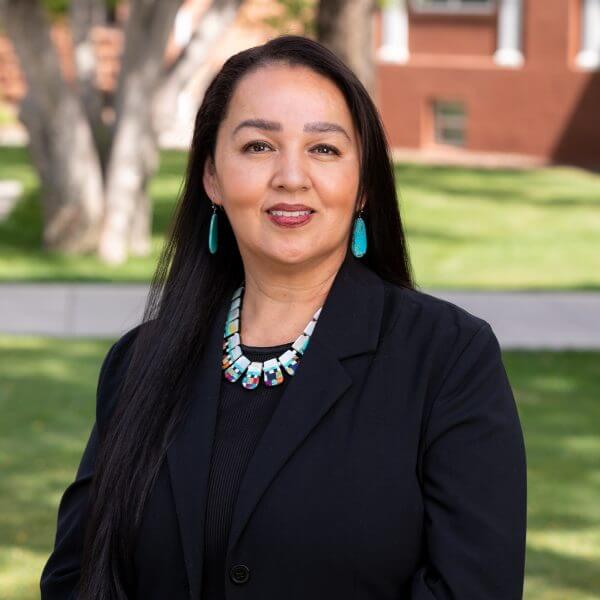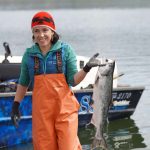
Ann Marie Chischilly recently drove from Flagstaff, Arizona, where she now lives, to Kayenta near where she grew up. Chischilly is Diné, or Navajo, and returns often to her ancestral lands to visit her mother, who is a tribal elder. The journey north toward the Utah border passes through sweeping valleys studded with towering red-orange sandstone spires and buttes, some of which rise several hundred feet above the desert floor. It’s a spellbinding place, though Chischilly has seen a lot of unwelcome changes there in the past few decades.
When she was growing up, the lush plateau was forested with juniper, piñon and ponderosa pine. But now, “all the sagebrush that used to be in abundance, a lot of it’s sand dunes now, and a lot of the trees are dying,” she says. Grasses that used to grow knee-high have scattered to the wind. Sheep that once drunk from natural springs are no longer there.

As a child, Chischilly remembers learning from her grandmother – an herbalist — about which plants grew where and when, and how to use them. It was part of “traditional ecological knowledge” – also called by other names, including Indigenous knowledge or Native science – acquired over centuries through direct contact with the environment. TEK is particularly useful in identifying changes to wildlife, landscape and local ways of life that have occurred as a result of climate change. Chischilly recalls her grandmother observing the troubling loss of unique plants, saying “those don’t grow here anymore, because there’s not enough rain.”
The weather conditions that her grandmother could spot impacting the ecosytem has turned into a mega-drought, decades in the making. A study just published in Nature Climate Change shows that the years 2000 to 2021 were the driest period in the Southwest in the last 1,200 years. While droughts are a periodic feature there, rising temperatures and less precipitation due to climate change are exacerbating its effects – and threatening livelihoods, including that of Diné women who traditionally use sheeps’ wool for weaving blankets and rugs. “My nation has completely changed from when I was a child,” Chischilly says.
As executive director of the Institute for Environmental Tribal Professionals, Chischilly has been helping Indigenous nations like her own with climate change adaptation strategies and implementation for over 20 years. Many of the 574 federally-recognized Tribes in the U.S.are disproportionately impacted by climate change. While drought and wildfire risks plague the Southwest, other Tribes are grappling with flooding, erosion and sea level rise—from Alaskan Native communities and the Quileute Nation in Washington to the Seminole in Florida.
Chischilly is one of a group of tribal leaders in climate change research who first convened in 2014 as part of then-Department of the Interior head Sally Jewell’s Advisory Committee on Climate Change and Natural Resource Science. Chischilly, along with scientist Gary Morishima of the Quinault Indian Nation, formed a subcommittee of national Indigenous scholars who put together the “Guidelines for Considering Traditional Knowledges in Climate Change Initiatives” that laid the groundwork for incorporating TEK into federal agency policies.
That effort reached a high point in November 2021 when, at the Tribal Nations Summit at the White House, the Biden-Harris Administration issued a memorandum “recognizing Indigenous Traditional Ecological Knowledge as one of the important bodies of knowledge that contributes to the scientific, technical, social, and economic advancements of our nation.” The administration vowed to develop guidance for federal agencies on how Indigenous science can strengthen empirical science and decision-making across the federal government. For Tribal leaders, it is a milestone in nation-to-nation relations. “The fact that now it’s at the White House level, for us that was one the pinnacle points,” Chischilly says “Because the highest leader in the country is now saying he acknowledges [TEK]…it’s a huge move.”
‘Walking in Two Worlds’
Blending those two ways of looking at the world—Indigenous knowledge and Western science is possible, and desirable, but it’s like “walking in two worlds,” says Samantha Chisholm Hatfield. Like Chischilly, she was taught to “read the environment,” from the time she was a baby, based on generations of understanding about the natural world passed down. For Chisholm Hatfield, who is enrolled with the Confederated Tribes of Siletz Indians (from the Tututni and Chinook bands), and is also Cherokee, that awareness amounts to a way of seeing, of moving through the world, with an instinct about one’s surroundings. She describes it as forging a link between ourselves and our environs, akin to building a partnership. “It’s a relationship just as much as having a neighborly relationship or having a familial relationship or friendship,” she says.
In her work at Oregon State University, Chisholm Hatfield has been at the forefront of Indigenous and Westerns academic collaboration, and has focused on the nexus of communities, TEK and environmental shifts. Chisholm Hatfield, now a research associate in the Department of Fisheries, Wildlife and Conservation Sciences, is also an author of the Oregon Climate Change Research Institute’s “Tribal Climate Adaptation Guidebook,” which empowers Tribes to proactively adapt and plan for climate change.
Acquiring, understanding and maintaining TEK, obtained through adaptation and resilience and passed from one generation to the next, is a duty and tenet of Indigenous being, says Chisholm Hatfield. It’s a deep knowing she has lived, and studied, while earning her PhD at Oregon State in Environmental Sciences, with a focus on the TEK of Siletz tribal members. “It’s just a different paradigm. It’s just a different way of looking at the world in its holistic nature. Western science is very taxonomic, very categorical, very separatist almost,” she says. And it has historically viewed with skepticism detailed TEK observations, and dismissed them as culture, stories or anecdotes—as something not aligned with empirical evidence or “truth.”
Chisholm Hatfield emphasizes a shift from isolation to integration in order to bridge the gap between Native and Western science, and between many people and the natural world. On a planet with worsening wildfires and floods, and a staggering loss of biodiversity, some western researchers are now asking the original land stewards for help restoring the balance in ecosystems. In Alaska, the Inuit are teaching researchers about biodiversity and sea ice conditions in the Arctic; in the American West, tribal members are collaborating with land managers to burn small fires to prevent big ones. But there’s much more to be done, TEK leaders say.
For both Chisholm Hatfield and Chischilly, it is a time for action, hope and resilience. “When we talk about resilience, it’s not just in what we’re doing. It’s resilience in the mind and spirit,” says Chischilly. “There’s always been adaptation in the Indigenous community, there’s a foundation that we don’t let go of. That’s what keeps us alive.” ◼




